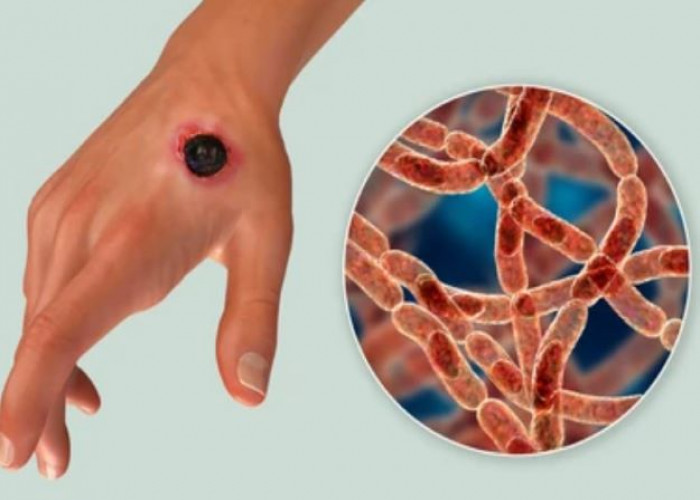 Welcome
Welcome
“May all be happy, may all be healed, may all be at peace and may no one ever suffer."
Anthrax

Anthrax is a bacterial infection caused by the spore-forming bacterium Bacillus anthracis. It can affect both animals and humans and is most commonly acquired through contact with infected animals or contaminated animal products (such as wool, hides, or bone meal).
There are three main forms of anthrax infection in humans: cutaneous (skin), inhalation (lungs), and gastrointestinal (stomach and intestines). The type of infection depends on the way the bacteria entered the body.
Symptoms of anthrax can vary depending on the type of infection but may include skin lesions or blisters, fever, fatigue, coughing, chest pain, abdominal pain, and vomiting.
Treatment for anthrax involves the use of antibiotics, such as ciprofloxacin or doxycycline. In severe cases, hospitalization may be necessary for close monitoring and supportive care.
If you suspect that you have been exposed to anthrax or are experiencing symptoms of anthrax, it's important to seek medical attention right away. Early diagnosis and treatment are key to improving outcomes and preventing the spread of the infection.
Research Papers
Disease Signs and Symptoms
- A raised, itchy bump resembling an insect bite that quickly develops into a painless sore with a black center
- Shock an acute medical condition involving collapse of the circulatory system
- Difficulty breathing (dyspnea)
- Shortness of breath (dyspnea)
- Swollen neck
- Difficulty swallowing (dysphagia)
- Severe, bloody diarrhea in the later stages of the disease
- Fever
- Loss of appetite
- Headaches
- Abdomen pain
- Nausea or vomiting
- Failing nausea
- Flu-like signs and symptoms (with bacterial prostatitis)
- Swelling in the sore and nearby lymph glands
- Meningitis or encephalitis
Disease Causes
Anthrax
Anthrax spores are formed by anthrax bacteria that occur naturally in soil in most parts of the world. The spores can remain dormant for years until they find their way into a host. Common hosts for anthrax include wild or domestic livestock, such as sheep, cattle, horses and goats.
Although rare in the United States, anthrax is still common throughout the developing world, in places such as Central America and South America, sub-Saharan Africa, Central Asia and southwestern Asia, southern Europe and Eastern Europe, and the Caribbean.
Most human cases of anthrax occur as a result of exposure to infected animals or their meat or hides. In the United States, a few people have developed anthrax while making traditional African drums from the skins of infected animals.
One of the few known instances of nonanimal transmission was a bioterrorism attack that occurred in the United States in 2001. Twenty-two people developed anthrax after being exposed to spores sent through the mail, and five of those infected died.
More recently, in two separate outbreaks, heroin users in Europe contracted anthrax through injecting illegal drugs. A total of 40 people died. Heroin sold in Europe likely comes from areas where naturally occurring anthrax is more common.
Disease Prevents
Anthrax
To prevent infection after being exposed to anthrax spores, the Centers for Disease Control and Prevention recommends:
- A 60-day treatment with antibiotics — ciprofloxacin, doxycycline and levofloxacin are approved for adults and children
- A three-dose series of anthrax vaccine
- In some cases, treatment with monoclonal antibodies — raxibacumab and obiltoxaximab
Anthrax vaccine
An anthrax vaccine is available for certain groups of people. The vaccine doesn't contain live bacteria and can't lead to infection. However, the vaccine can cause side effects, ranging from soreness at the injection site to more-serious allergic reactions.
The vaccine isn't intended for the general public. Instead, it's reserved for military personnel, scientists working with anthrax and people in other high-risk professions.
Avoiding infected animals
If you live or travel in a country where anthrax is common and herd animals aren't routinely vaccinated, avoid contact with livestock and animal skins as much as possible. Also avoid eating meat that hasn't been properly cooked.
Even in developed countries, it's important to handle any dead animal with care and to take precautions when working with or processing imported hides, fur or wool.
Disease Treatments
The standard treatment for anthrax is an antibiotic such as ciprofloxacin (Cipro), doxycycline (Vibramycin) or levofloxacin. Which single antibiotic or combination of antibiotics, and the length of treatment, will be most effective for you depends on how you were infected with anthrax, your age, your overall health and other factors. Treatment is most effective when started as soon as possible.
Since the 2001 attacks in the United States, researchers have developed antitoxin therapies — raxibacumab and obiltoxaximab — for inhalation anthrax. Instead of going after the bacteria that causes the disease, these medications help eliminate the toxins caused by the infection. Anthrax immunoglobulin also may be used to neutralize the toxins. These medications are given in addition to antibiotics and are available to doctors through the U.S. Centers for Disease Control and Prevention.
Some cases of injection anthrax have been successfully treated with surgical removal of infected tissue.
Although some cases of anthrax respond to antibiotics, advanced inhalation anthrax may not. By the later stages of the disease, the bacteria have often produced more toxins than drugs can eliminate.
Along with antibiotics, people with anthrax may be treated with intensive supportive care including ventilators, fluids and medicines to tighten blood vessels and raise blood pressure (vasopressors).
Disease Diagnoses
Disease Allopathic Generics
Disease Ayurvedic Generics
Disease Homeopathic Generics
Disease yoga
Anthrax and Learn More about Diseases

Neurofibromatosis

Truncus arteriosus

Chronic cough

Giant cell arteritis

Blocked tear duct

Polycythemia vera

Cradle cap

Small intestinal bacterial overgrowth (SIBO)
Anthrax, Bacillus anthracis, Anthrax disease, অ্যানথ্রাক্স
To be happy, beautiful, healthy, wealthy, hale and long-lived stay with DM3S.
